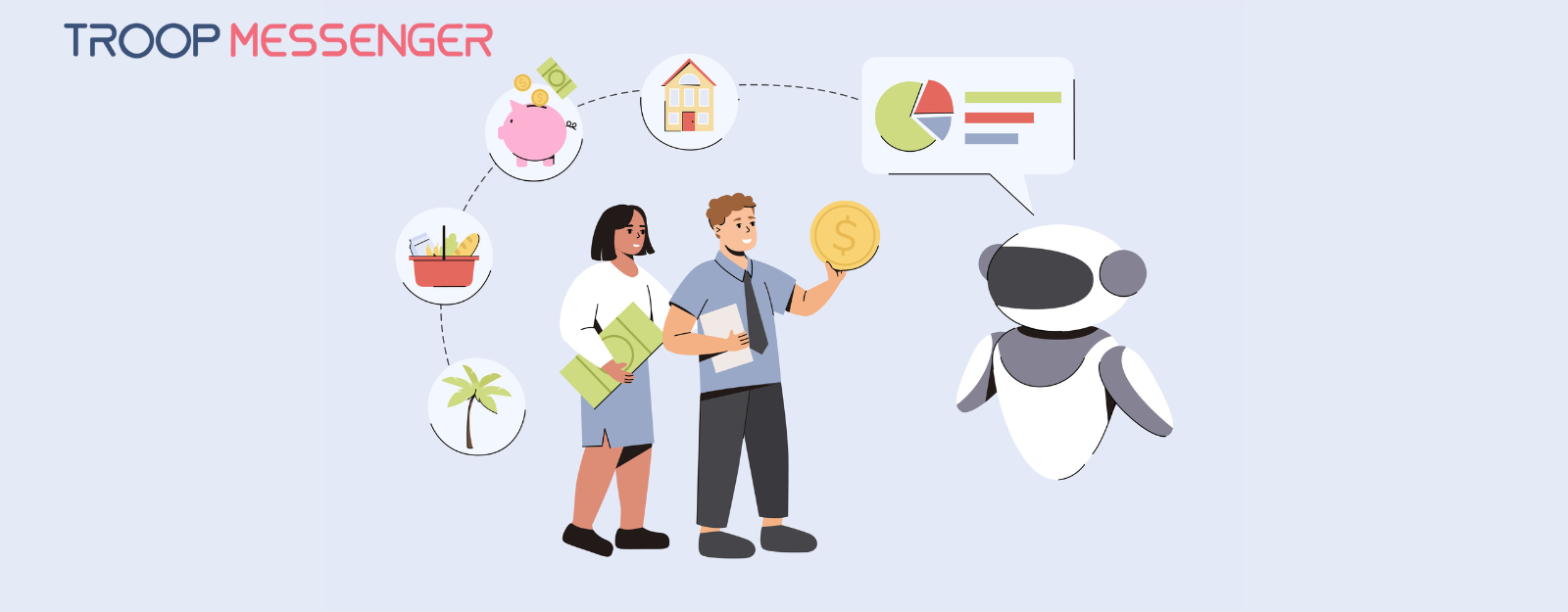Connect with us

Tips on How to Effectively Manage a Cross-Generational Team
A challenge that’s increasingly common in workplaces today is that many generations often work together in one team. Managing a cross-generational team can be challenging. The generation gap between members requires managers to understand the unique habits, behaviors and preferences of different generations.
A prime example of age differences is in the use of technology. You can’t do much without apps and tools in the workplace today, but Gen X, Y and Z are much more accustomed to using them than older generations. Here are some tips on how to effectively manage a multi-generational team.
What is a cross-generational team?
A cross-generational team may have a big generation gap between older and younger team members. Many individuals choose to work beyond the typical retirement age today, and team diversity is more significant than ever. The team may contain some baby boomers born between 1946 and 1964. Other generations in a team may be:
- Gen X—born 1965 to 1980.
- Millennials—born 1981 to 2000.
- Gen Z—born 2001 to 2020.
Baby Boomers didn’t grow up using the internet or advanced technology. There is a big generation gap between them and Gen Z. They may need advice from younger colleagues familiar with tasks like how to screen record on Mac, etc. Having advice and mini-tutorials on how to deal with certain technology can be very helpful for them in the workspace.
Distinctive features of a cross-generational team
A cross-generational team is not easy to manage because professionals from various generations have different attitudes, approaches, experiences and work styles. A few of the areas in which they are different include
- Technical skills: As mentioned, technical skills vary significantly between older and younger generations. Usually, younger employees are more tech-savvy, i.e. used to rapidly developing technology and can more easily adapt to the changes it drives than older generations.
- Work styles: Recent college graduates may put a high value on being able to work flexibly. Those who entered the workforce before the 2000s prioritize job security and a nine-to-five schedule.
- Communication methods: Older generations often prefer calling on the phone to dashing off an email. The generation gap between them and younger colleagues may complicate communication. Gen Z might panic when someone calls out of the blue. Younger generations grew up with almost unlimited access to smartphones and messengers. They are more likely to text. At the same time, older colleagues might experience slight inconvenience in typing long emails.
These are just a few of the differences between those working in a multi-generational team, but they are likely to be some of the most important ones.
Effectively managing a cross-generation team
Negative stereotypes can create a toxic culture in a multi-generational team and hinder job performance and productivity. Employees who feel threatened by age-based stereotypes are less committed to their jobs and less well-adjusted psychologically. Therefore, challenging stereotypes is one of the most critical aspects of managing a cross-generational team.
1. Challenge stereotypes
It is easy to resort to stereotypes rather than work on understanding among group members and valuing differences. The first step towards overcoming age bias and developing mutual respect is debunking the stereotypes. Managers need to educate multi-generational team members on the realities different generations face in their careers.
2. Openly communicate preferences
It’s unreasonable to expect that the reasons someone may approach work in a certain way are clear to people who began their professional life at a different time. It is why openly talking about preferences can make a difference.
Managers have to understand the preferred work cycles of all team members in a multi-generational team and what motivates them. Baby boomers usually want stability and job security, whereas Gen Z wants workplace flexibility, shared values, increased mental health support, and only then good pay. Organizations that adjust to different needs are more likely to attract and retain top talent.
Making the work environment suitable for all these different preferences can take time and effort. Managers should offer a comprehensive benefits package that gives everyone something. All age groups will appreciate programs for wellness, paid time off etc. Other benefits that may appeal to include:
- professional development
- community service opportunities
- financial investment programs
- social events
3. Discuss communication options
A manager of a multi-generational team needs to set an example by helping team members to find ways to communicate clearly. There is no right or wrong communication style. A manager needs to select the best way to connect with different team members to avoid communication breakdowns. Let your managers choose the best team communication tool like Troop Messenger that helps the cross-generational teams collaborate seamlessly across its simple-to-use UI.It may involve meeting in the middle to find common ground and blending various communication styles.
- Switching between different methods of communication may work depending on the goal of the communication.
- Older generations usually find it easier to chat on the phone with clients. This strategy may help to build rapport with them.
- Emails might be used when one must respond quickly and efficiently.
4. Respect boundaries
The more comprehensive the representation of different age groups in a cross-generational team is, the more topics need discussions. Some of the essential issues in today’s workplace include
- Diversity
- Inclusion
- Gender roles
- Mental health
The age of team members may substantially influence how employees in a multi-generational team feel about these topics.
When it comes to diversity and inclusion, legal and moral perspectives come into play. Not everyone has to agree, but employees have to understand why an organization places importance on such issues.
It can be challenging for managers to respect the various boundaries of team members while still upholding their values. Providing ongoing discussion opportunities is more important than forcing all team members to have a particular point of view.
5. Use a collaborative leadership style
Managers must create an inclusive decision-making process that enables all team members to thrive. A collaborative leadership style works best in a cross-generational team. Managers need to emphasize continuously that collaboration from everyone leads to new insights and better decision-making.
Good leaders who collaborate effectively can extract the best from all age groups. It means focusing on everyone’s strengths rather than their weaknesses. It means listening to what makes individual team members most productive. Some team members may respond to regular feedback, whereas others prefer working more independently. Managers should be open to supporting these preferences.
6. Encourage cross-generational mentoring and learning
The key to respecting other generations is understanding and accepting their differences. Ignoring differences and treating everyone the same will likely make everyone feel undervalued.
Benefitting from the diversity of a cross-generational team means that people can learn from one another. Cross-generational mentoring means that employees with more experience can advise younger colleagues on issues such as career development. Younger employees can help educate mature employees about current trends and technology. Mutual support and experience exchange help teams process and implement necessary company policies faster. For example, HR security technologies and protective measures prove their effectiveness only when all employees understand the advances in applying security strategies. With a necessary level of employee cooperation and engagement, the company may avoid severe security, productivity, and management problems.
7. Be clear about expectations
When team members in a cross-generational team have the same purpose, it minimizes their differences. All employees, regardless of age, want to know the business goals and their role in achieving them. Managers need to have consistent ways to communicate their expectations with individuals and teams. It helps keep employees accountable, and they have the confidence to know where they are headed.
Millennials usually expect continuous feedback to make sure they are on track. Boomers and Gen Xers want feedback but expect it less often. Managers need to find ways to give feedback and identify what feedback methods different age groups prefer.
8. Use multi-generational team building
Multi-generational team-building activities can help different generations become less aware of their differences. Activities can help them bond and develop closer relationships with one another.
- Activity 1:Understanding values: A multi-generational team-building activity could be about values. Managers could ask each team member to think about five top workplace values, such as transparency, reliability etc. Once they have done this, they could divide the team into groups with different ages in each group. Each member has to share with the group what they value most.
- Activity 2:Better understanding generational differences: Another exercise could be to have employees write down two of their strengths and two weaknesses. They could then break into teams to share them. It could promote self-awareness and help them to understand more about their colleagues.
- Activity 3:Understanding communication styles: Managers can come up with the idea that each employee has to pitch to a coworker. Give them time to make notes and pair them up with a colleague from a different generation. They need to make their pitches to one another. Afterwards, teammates should discuss how they could have made the pitch more appealing and what didn’t work regarding language, tone and attitude.
9. Don’t overlook the similarities
Beyond all the superficial differences in a cross-generational team, members may share certain similarities. Most employees want to feel engaged, receive fair pay, be respected, and work towards a better quality of life. Many of them also share the same frustrations. Managers who can create opportunities to illustrate the shared values of multi-generational team members will create a more productive and effective team.
Managing a multi-generational workforce means utilizing differences and reinforcing similarities too. Listening is one of the managers' most important qualities because everyone wants to be heard. If they can listen and understand all team members, they can establish a multi-generational workforce that thrives.
Conclusion
Discovering how to manage a cross-generational team has challenges, but it can be rewarding. Managers can leverage age-related differences and create a talent flow that supports a business's sustainability. It is essential to establish a culture where communication is open and honest. Everyone in a team should feel respected and able to fulfil individual and professional needs.








